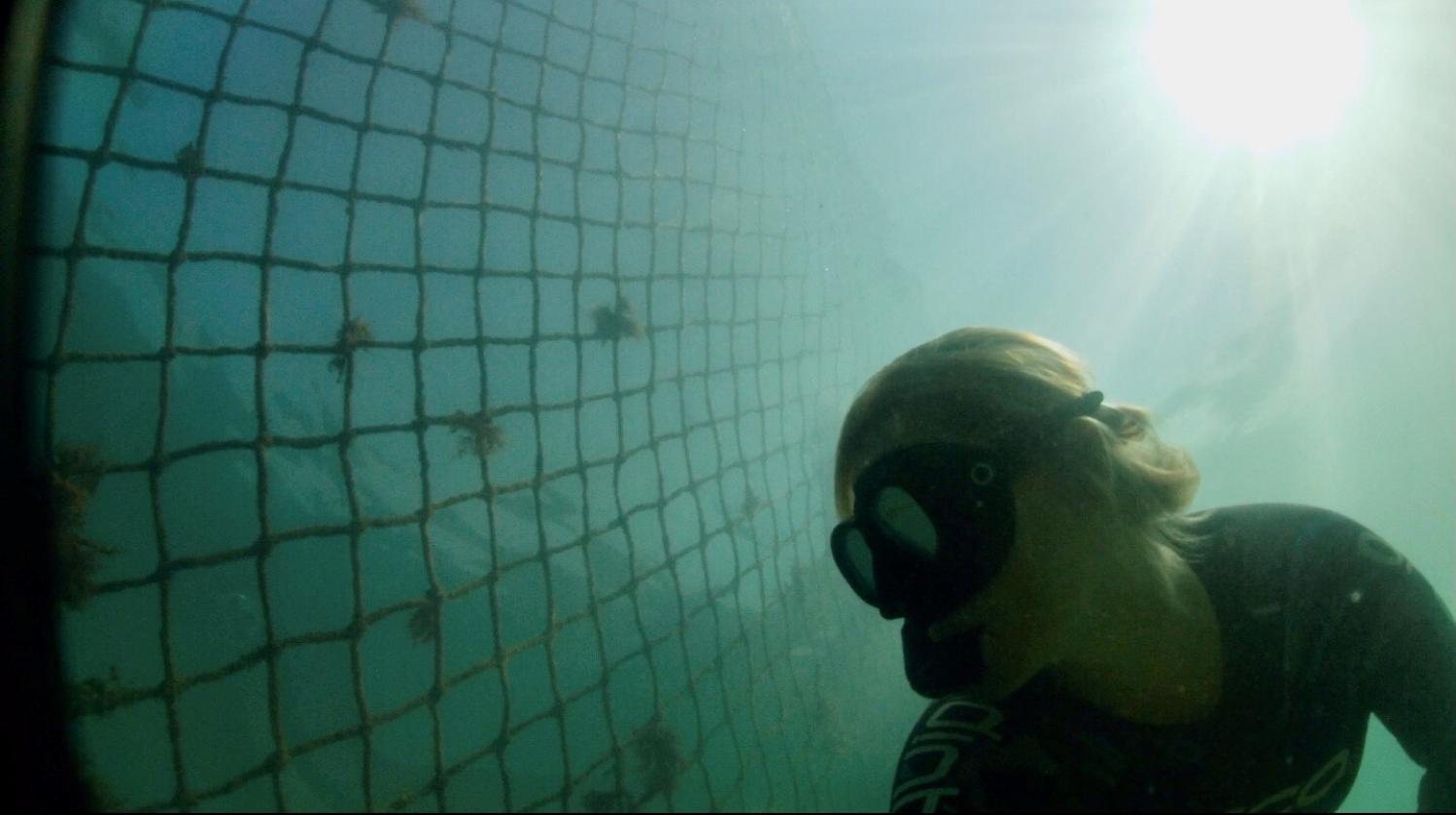June 6 - 12, 2021: Issue 497
Tracy Bullen
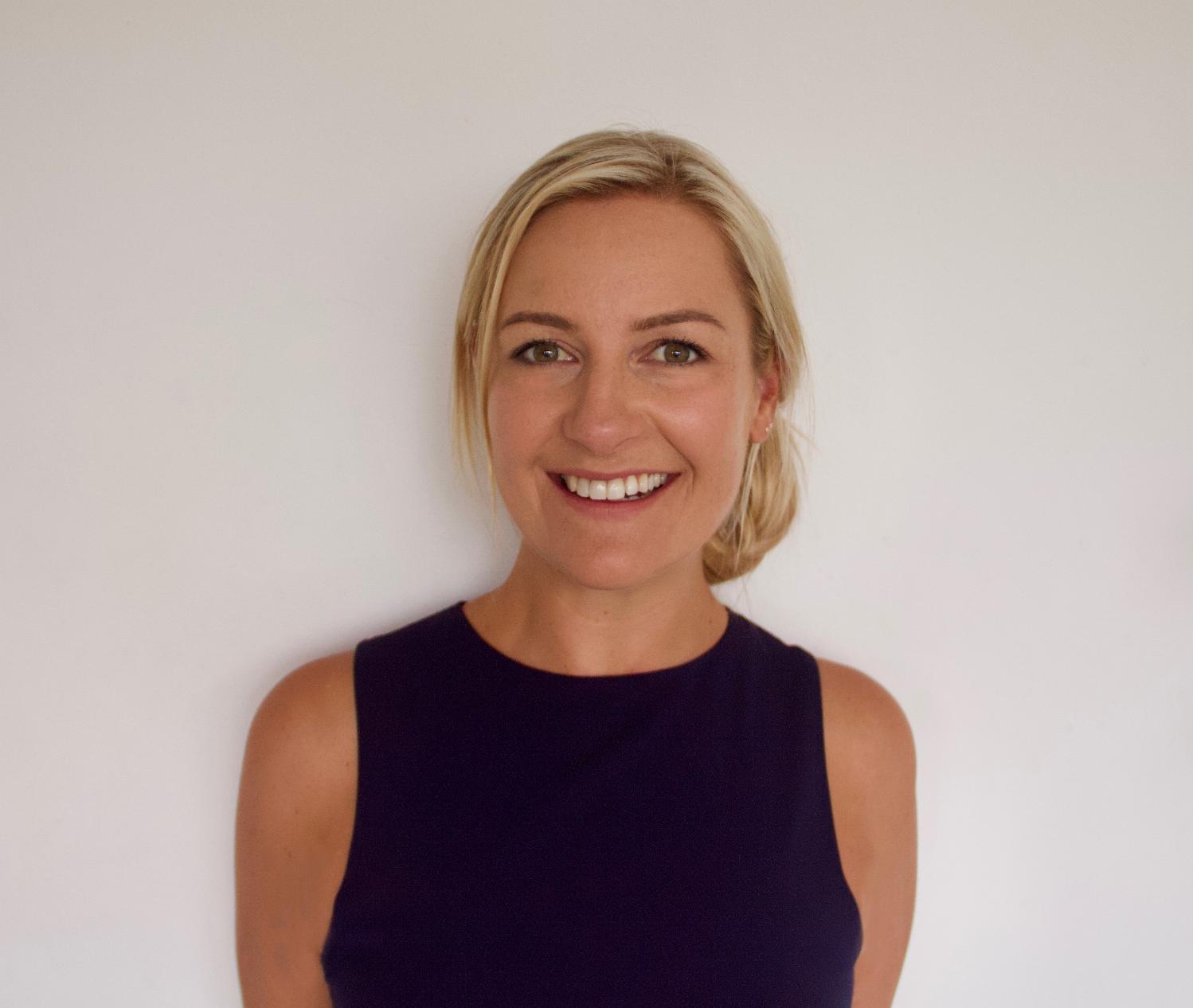
Tracy Bullen is a passionate ocean swimmer who taught at Bilgola Plateau Public School for a while - so this great news may be of interest to our younger Readers - on Saturday May 29th Tracy saw the completion of a two year project with her children's picture book, The Sydney Seahorses, being released.
 ''There’s something so special about Sydney beaches. Last week as I was watching the sparkling reflections on the water at Palm Beach, I couldn’t help but take a refreshing dip in the ocean. Even during these midweek days in May, diving under the surface of the water can be a little cooler but oh so rewarding. It changes the whole day.'' Tracy said on launch day
''There’s something so special about Sydney beaches. Last week as I was watching the sparkling reflections on the water at Palm Beach, I couldn’t help but take a refreshing dip in the ocean. Even during these midweek days in May, diving under the surface of the water can be a little cooler but oh so rewarding. It changes the whole day.'' Tracy said on launch day
''I have been exploring the waterways of Pittwater from a young age and continue to be surprised and in awe of the diverse marine life in Sydney. Seahorses are one of those rare species and once you get a glimpse, you treasure the moment forever.''
''Inspiring children to explore our underwater world, become inquisitive and appreciate the marine environment has always been my focus. Through the text and glorious illustrations, children can engage in quality literature and join in on an adventure.
My aim was to create a story that encourages children to expand their ideas, think deeply and notice new things in their worlds. ''
The Editors at Austin & Macauley Publishers described The Sydney Seahorses as “delightfully educative and visually joyful. The author has captured the essence of the space under the waves to perfection with their story of a girl and a seahorse. It waits and it waits for the snorkeller to join in the fun and there is little doubt that the piece would attract the right read-a-long audience that the writer’s experience was aiming at. Absolutely charming, it has the opportunity to attract an international readership of parents and children alike well past the final picture.”
The target age group is 4-7 years and it can be bought now through all good book stores.
Tracy Bullen is an Australian writer, primary school teacher, National Parks officer and marine science advocate. Her diversity across multiple areas broadly inspires narratives of discovery. She does her best writing when exploring our local beaches.
As a teacher, Tracy is well-educated in engaging young children and developing vocabulary in early years. Tracy also organises Junior Ranger programs in her local school and is passionate about exploring the marine environment.
This week a chat with the Author herself.
Please share a bit about your background. Where born, grew up, career went into after school and why you chose this field.
I’ve been surrounded by water all my life, having the privilege of growing up in a national park in Pittwater. This environment always made me inquisitive and adventurous. Wildlife was part of everyday life, from watching the white-bellied sea eagles, wallabies, snakes and stingrays. I travelled abroad after school and continued adventuring, scuba diving and exploring. During university, I was naturally drawn to marine science subjects and field trips while completing my Teaching degree to pursue my career in educating future generations.
I chose this field because I am always in awe of the underwater world and marine creatures in their unique environment. I want to encourage others to explore and to be life long learners too.
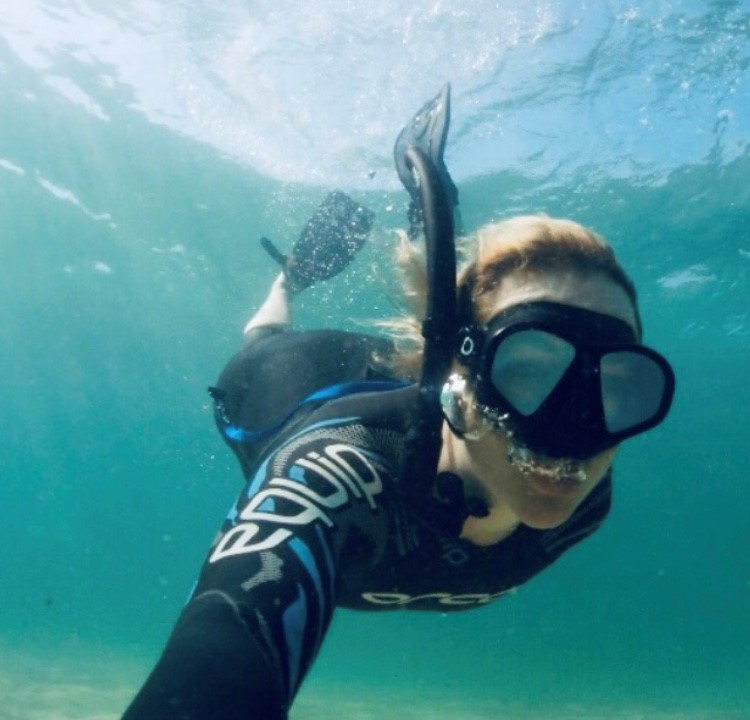
Where did the inspiration for The Sydney Seahorses come from and how did you develop the work?
My inspiration comes from my own experiences and the photos I share of the ocean. I noticed how many people are sparked and ask questions. Over years of primary teaching, reading books is an engaging enjoyable activity for my class and myself and I use books as a springboard into literacy, numeracy and science lessons.
A couple of years ago I decided to start writing a book of my own because of the pure delight on children’s faces resonates in my mind when I share stories of my marine adventures. There was no hesitation with what the book subject was going to be involving - marine life.
What’s The Sydney Seahorses about?
A snorkelling adventure about how every under water experience is different and the beauty of the ocean. It’s also about sometimes in life we have to wait. It’s about simplicity and how we are all unique.
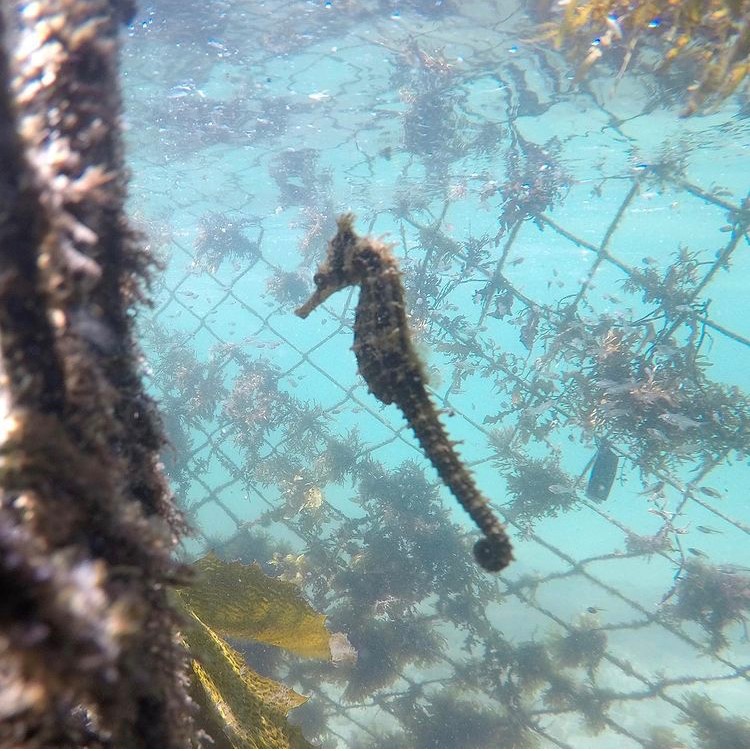
Why did you choose to do this through a book for children?
For all the children I haven’t been able to teach, hopefully through my book I can create a little spark of inspiration to explore the world around us and have adventures.
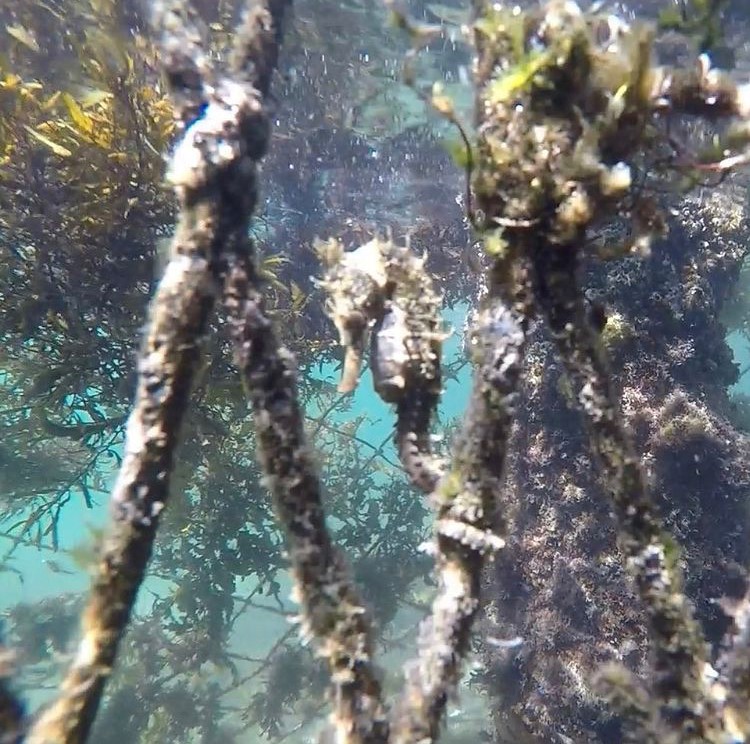
You’re also a National Parks officer – what’s involved in that role?
Greeting and informing visitors so they can enjoy National Parks, educating them on park values & promoting a positive visitor experience.
Junior Ranger programs – what are they and how does it work?
When I was teaching in one of my local schools I created the Junior Ranger Program for students to immerse themselves in nature and learn about the world around us. We would do nature treasure hunts, research projects and share our experiences.
Will there be follow up books?
I have so many experiences in national parks and the marine world I would be thrilled to share. I am enjoying this learning adventure of publishing and the variety of doors opening.
What are your favourite places in our area and why?
Shelly Beach, Manly is a marine reserve in Sydney. The abundance and diversity of marine animals provides sheer delight and a way to admire seasonal species in their natural environment.
What is your ‘motto for life’ or a favourite phrase you try to live by?
Let the ocean wash over you.
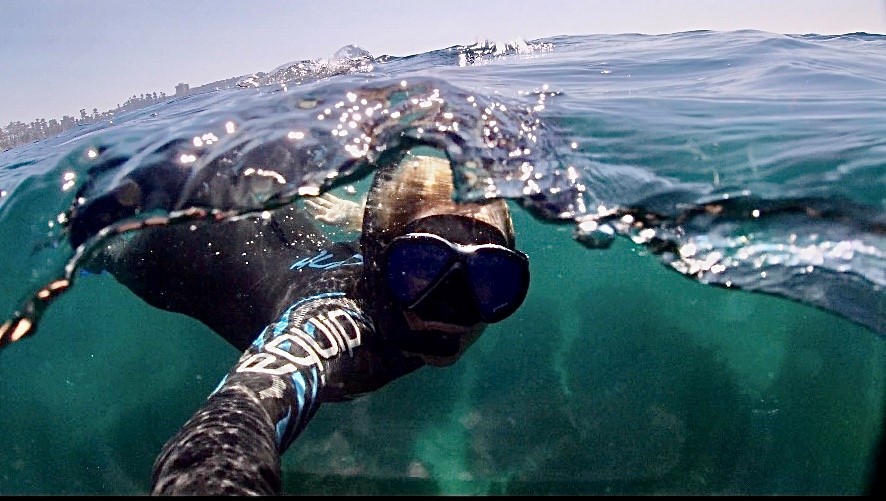
White’s Seahorse (Hippocampus whitei), also known as the Sydney Seahorse, is a medium-sized seahorse that is endemic to the east coast of Australia. The species is named after John White, Surgeon General to the First Fleet, and is one of four species of seahorses known to occur in NSW waters. Favouring shallow-water estuarine habitats, it is currently known to occur in eight estuaries on the NSW Coast, but is most abundant in Port Stephens, Sydney Harbour and Port Hacking. Its northern limit is Hervey Bay in Queensland and it has been historically recorded as far south as St Georges Basin in NSW.
The White’s Seahorse grows to a maximum length of 16 cm (from the tip of the tail to the top of the seahorse crown). The species colour is highly variable as the species is known to change colour depending on their mood and the habitat colouration it is living on. Male seahorses can be recognised by the presence of a pouch below the abdomen which is absent in females.
Some of the morphological characteristics of the White’s Seahorse are:
- 17-18 dorsal-fin rays,
- 16 pectoral-fin rays
- 34-35 tail-rings
- coronet is tall arranged in five pointed star at apex
- spines are variable ranging from low to moderately developed and from round to quite sharp
- a long snout
They have a very small anal fin which is used for propulsion, however, they are known to be one of the slowest swimming fishes in the ocean.
Habitat and ecology
The White’s Seahorse is considered to be endemic to the waters of southern Queensland (Hervey Bay) to Sussex Inlet NSW where it can be found occurring in coastal embayments and estuaries. It is known to occur from depths of 1 m to 18 m. Habitats that are considered important habitat for the White’s Seahorse include natural habitats such as sponge gardens, seagrass meadows and soft corals. It is also known to use artificial habitats such as protective swimming net enclosures and jetty pylons.
In Port Stephens, adult White’s Seahorses show a preference for sponge, soft coral and Posidonia australis seagrass habitats. Juveniles prefer gorgonian fan habitats as well as sponges and soft corals. In the Sydney region they are most likely to be found occurring on the artificial protective swimming net habitats.
In the wild they are known to live for up to six years and the breeding season is from September to around February. They display long-term monogamy to their partners and the pregnancy period is about 3 weeks. The male seahorse gives birth to 100 – 250 babies and can reproduce up to 8 times during the breeding season.
The primary cause for the decline in abundance of White’s Seahorse is the loss of natural habitats across their range in eastern Australia. The seahorses occur within coastal estuaries and embayments which are areas subject to population pressure.
Within Port Stephens, over 90% of the soft coral and sponge habitats have declined at sites where the seahorse used to be abundant. Habitats in Port Stephens have been destroyed through the installation of boat moorings, boat anchors and the inundation of habitat by sand movement.
Within Sydney Harbour, population pressure has caused their natural habitats to decline and, as a result the species is now predominantly found on man-made swimming nets within the harbour. These nets are periodically cleaned to remove the marine growth and repair the structural integrity of the nets which can lead to further displacement of seahorses and cause populations to dramatically decline. DPI Fisheries has been working with councils to develop practices which avoid damage to seahorses during net cleaning and repair.
Late in 2018 40 endangered seahorses discovered in tidal pools here were relocated. These White's seahorses, found by council workers preparing to conduct repair work on the Clontarf Beach and Forty Baskets tidal pools had many pregnant females among them and had to be handled with lots of care.
"The male animal gives birth, which is unusual in the animal kingdom, but they also fall in love — the seahorses pair up for life," said David Harasti, a senior research scientist with NSW Fisheries.
The seahorses were relocated carefully with those moving them making sure the bonded pairs weren't separated.
Apparently the nets are an ideal 'home' for them.
There's also some other great projects to look after these wonderful sea creatures. In February 2020 Pittwater Online News ran a report you can still read: -
To Save These Threatened Seahorses We Built Them 5-Star Underwater Hotels.
